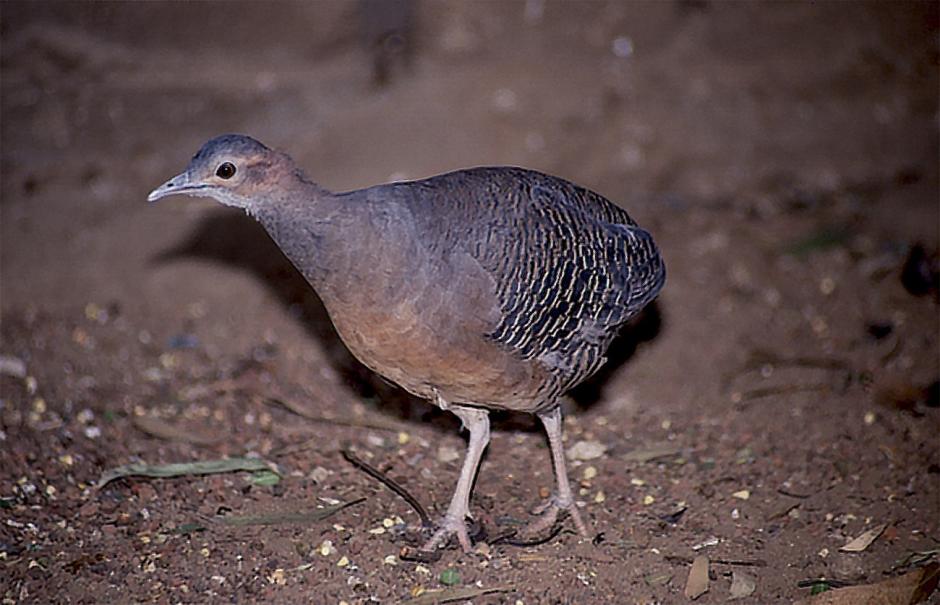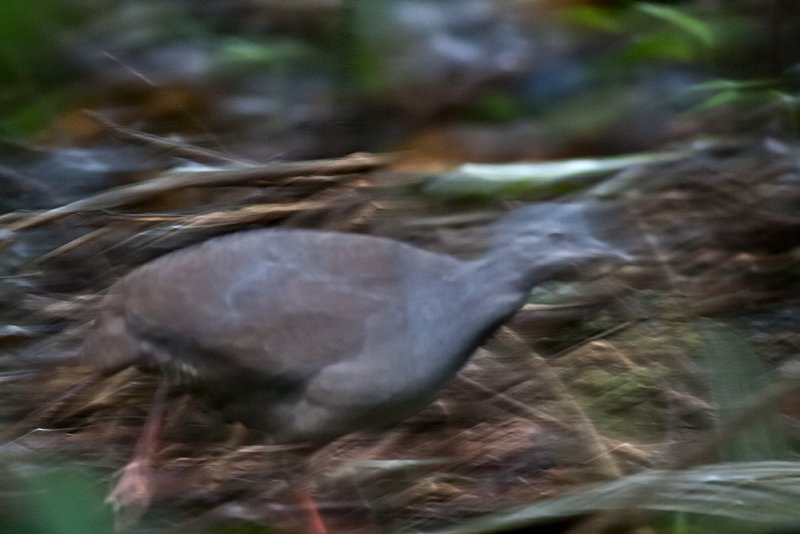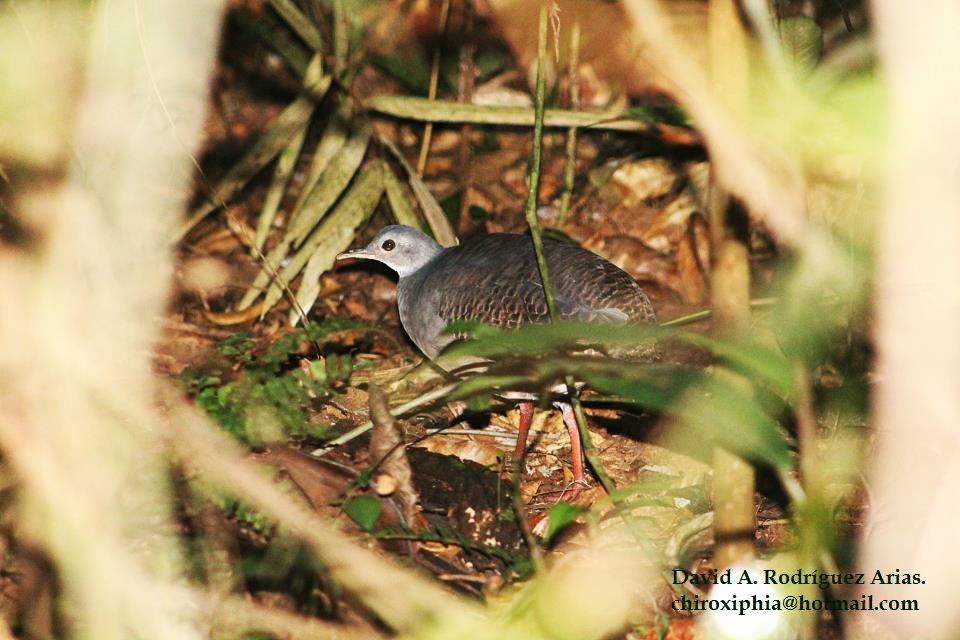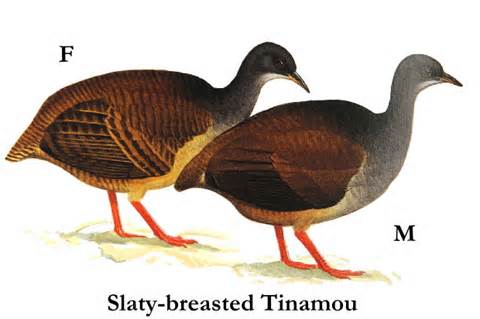
Crypturellus boucardi
TAXONOMY
Crypturellus boucardi Sclater, 1859, Oaxaca, Mexico. Two subspecies.
OTHER COMMON NAMES
English: Boucard tinamu; French: Tinamu de Boucard; German:
Graukehltinamu; Spanish: Tinamъ Pizarroso.
PHYSICAL CHARACTERISTICS
10.8 in (27.5 cm), 1 lb (470 g). Pink to bright red legs; slaty
breast, blackish head, and white throat. Back is blackish to
chestnut. Female has barring on wings.
DISTRIBUTION
Belize, Costa Rica, Guatemala, Honduras, Mexico, and
Nicaragua.
HABITAT
Sea level to 6,000 ft (1,800 m), sometimes favors thick undergrowth.
Also humid forest with little undergrowth at ground
level. Sometimes common in regenerating plantations and is
often in damp areas, especially near forest edges.
BEHAVIOR
The call has three notes and is lower than the calls of many
tinamous. It may be given in long bouts, up to five hours in
one case. Calls of individual males are recognizable, and mellower
and less variable than female calls. It is solitary, remaining
in its home range throughout the year.
FEEDING ECOLOGY AND DIET
Feeds on fruits and seeds, tossing leaves aside with its bill in its
search. It takes insects, including ants and termites.
REPRODUCTIVE BIOLOGY
In the breeding season it establishes a small territory in its
home range, attracting two to four females to lay in a nest at
the base of a tree or in thick vegetation. The male alone incubates;
females leave to mate with another male.
CONSERVATION STATUS
Not threatened.
SIGNIFICANCE TO HUMANS
Hunted as a game bird and has become rare in some of its
range, but is elsewhere still common.
Other popular Animals
Photo Gallery of - Slaty-breasted tinamou




 Animalia Life
Animalia Life